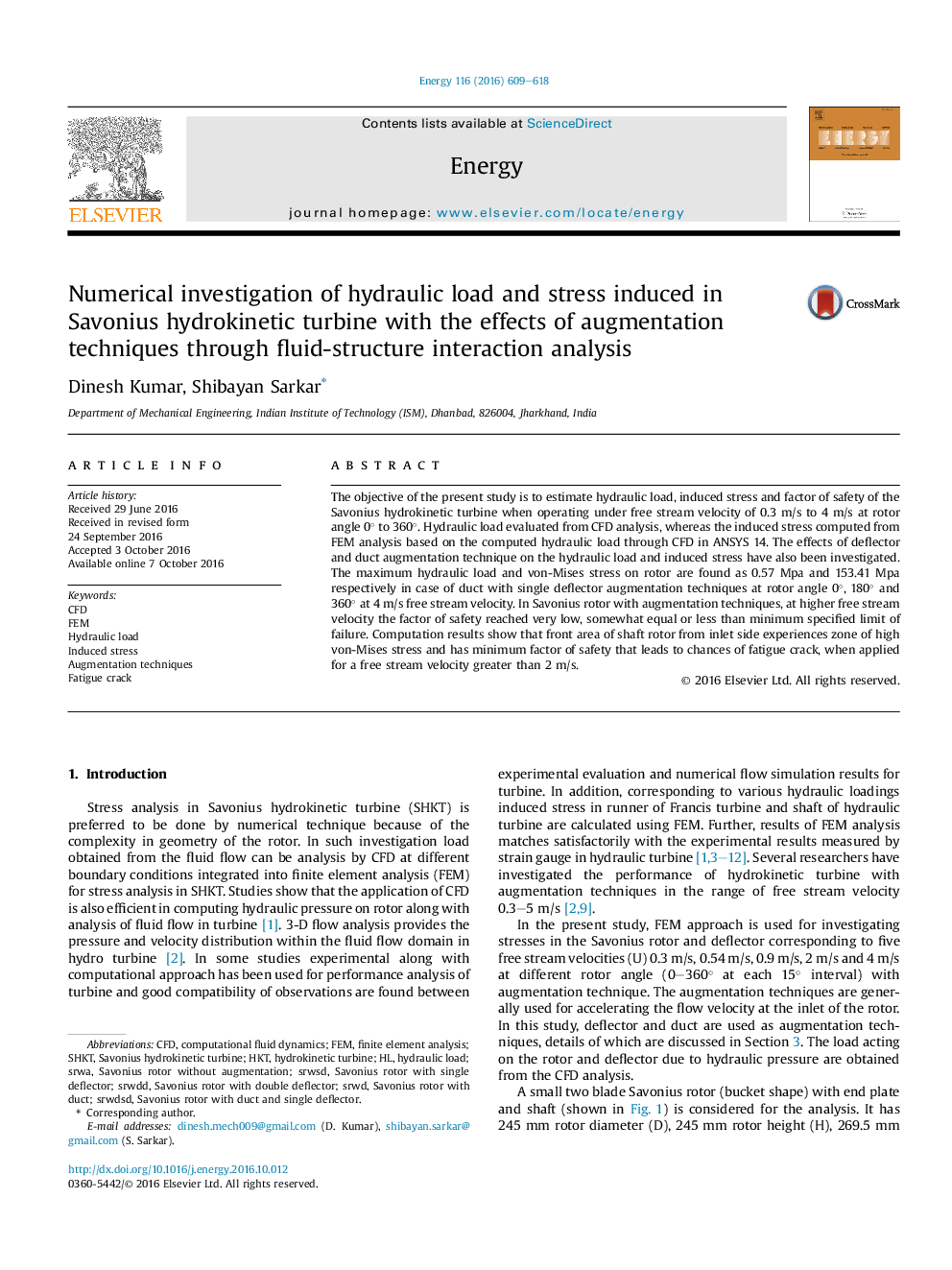| کد مقاله | کد نشریه | سال انتشار | مقاله انگلیسی | نسخه تمام متن |
|---|---|---|---|---|
| 5477316 | 1399217 | 2016 | 10 صفحه PDF | دانلود رایگان |

- Modeling of stress induced in SHKT is analyzed by the fluid-structure interaction.
- The induced stress on rotor at different operating conditions has investigated.
- The maximum induced stress on rotor is found as 153.41Â Mpa in case of srwdsd.
- Maximum induced stress is situated at the front area of shaft rotor from inlet side.
- Zone of maximum induced stress is the critical area of fatigue crack initiation.
The objective of the present study is to estimate hydraulic load, induced stress and factor of safety of the Savonius hydrokinetic turbine when operating under free stream velocity of 0.3 m/s to 4 m/s at rotor angle 0° to 360°. Hydraulic load evaluated from CFD analysis, whereas the induced stress computed from FEM analysis based on the computed hydraulic load through CFD in ANSYS 14. The effects of deflector and duct augmentation technique on the hydraulic load and induced stress have also been investigated. The maximum hydraulic load and von-Mises stress on rotor are found as 0.57 Mpa and 153.41 Mpa respectively in case of duct with single deflector augmentation techniques at rotor angle 0°, 180° and 360° at 4 m/s free stream velocity. In Savonius rotor with augmentation techniques, at higher free stream velocity the factor of safety reached very low, somewhat equal or less than minimum specified limit of failure. Computation results show that front area of shaft rotor from inlet side experiences zone of high von-Mises stress and has minimum factor of safety that leads to chances of fatigue crack, when applied for a free stream velocity greater than 2 m/s.
Journal: Energy - Volume 116, Part 1, 1 December 2016, Pages 609-618